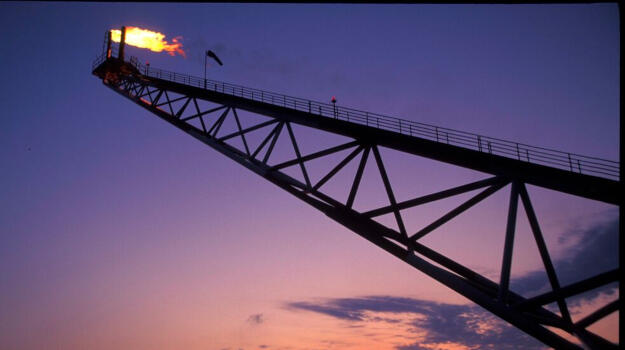Last year, annual crude production from the United States reached a record 11 (mb/d), representing the largest increase by any country ever, with annual production forecast to rise by 1.4 mb/d this year and 0.9 mb/d in 2020.

By Barry Rust, Marketing Manager Energy and Sustainability, Tata Steel
Meeting the challenge
According to The US Energy Information Administration (EIA), the country’s oil production reached a record average of 12.2 million barrels a day (mb/d) in 2019. Last year, annual crude production from the United States reached a record 11 (mb/d), representing the largest increase by any country ever, with annual production forecast to rise by 1.4 mb/d this year and 0.9 mb/d in 2020.
The continuing increases in demand for oil and gas in the US and elsewhere has led to the country exporting its supply of home produced hydrocarbons once again. However, it has also placed pressure on existing US domestic pipeline infrastructure and led to shortages, particularly in the expanding shale plays, which have revolutionised production growth in recent years. At the same time, the US Government has imposed tariffs on selected steel imports.
As the world transitions towards a lower carbon economy with a greater focus on environmental issues among a range of considerations for infrastructure and pipeline developments, the requirement for robust, higher-grade steels capable of performing in challenging or niche locations becomes more acute. To be clear, the US domestic industry has the capabilities to produce steel to the very highest standards of strength and integrity and has demonstrated this on many occasions over the years. However, whether it has sufficient capacity to meet all its current and future quality steel needs for the production of high integrity pipelines is debatable.
Decades of experience
Tata Steel has significant experience and expertise in producing high quality pipelines and has developed quality steels with high yield strength, good weldability and relatively low alloying in API X65 and API X70 grades to assist the US market.
While Tata Steel today supports the oil and gas industry in many global locations, the company essentially developed its steel-making capabilities for the sector more than 40 years ago to support the challenging and often onerous conditions of the North Sea. In the last 25 years it has supplied more than 4 million metres of pipelines for oil and gas projects in the region - including in excess of 500,000 metres of reel installed line pipe and more than £250 million invested in subcontracts for North Sea projects. Onshore, the company has a successful record in providing steel for many of the UK’s historic infrastructure projects from its 20” Mill in Hartlepool.
Considerations for onshore and offshore pipelines
Onshore pipelines are often longer than those offshore and, because of the distances that can be involved, are frequently operated at higher pressures. To counterbalance the impact of high pressure, such pipelines require either a greater wall thickness or use of a higher strength steel.
For both offshore and onshore pipelines, maintaining integrity is a key consideration – whether to reduce the exposure to risk for nearby residents or issues such as avoiding costly subsea intervention. Operators rightly need to be confident their chosen manufacturer can deliver pipe with high strength, tolerance and integrity to meet such challenges.
Total project cost is another critical consideration when manufacturing steel with a high yield strength, high integrity and good weldablity. The addition of expensive alloys during the manufacturing process can help to create a high strength steel, however this can add to material cost. An alternative is to create steel with a higher carbon content at a lower cost - but this can present welding challenges and impact on productivity. Manufacturing a steel that can provide the correct balance between high strength and helping to optimise total project cost can take research and development (R&D) departments several years to perfect. Tata Steel has invested significantly on R&D to create materials that meet the modern industry’s challenges.
A renaissance in HFI?
Another area where total project costs can be optimised is in the choice of the final product, and offshore Gulf of Mexico provides a good example of how the oil and gas industry is taking advantage of the latest developments in pipeline manufacture to generate significant financial benefits.
High frequency induction (HFI) welded line pipes have traditionally generated limited interest in the Gulf compared to more expensive seamless alternatives, despite the increased adoption of HFI welded pipelines elsewhere in the world. However, advancements in welded solutions over the years, and their proven successful performance in complex and challenging offshore environments such as the North Sea, have stimulated increased demand for HFI welded pipelines in the US recently. This demand has intensified since the industry’s emergence from the latest oil price downturn and the development of a more cost conscious environment focused on operational expenditure (opex) reduction and increased process efficiency.
The benefits of HFI welded pipelines include total lifetime cost savings driven by tight tolerances, material savings, exceptional surface conditions that require less preparation and provide an excellent coating base and the potential for very short lead times.
Again, Tata Steel has spent many years researching and developing its HFI offering to create materials that optimise mechanical and dimensional performance to deliver downstream saving and a reduced total cost of ownership.
A helping hand
As the US pipelines market continues to expand its onshore pipelines network and as the Gulf of Mexico starts to take advantage of high integrity welded pipelines, Tata Steel will continue to support US industry by developing the necessary high grade, high integrity pipelines infrastructure solutions.











































































































































































